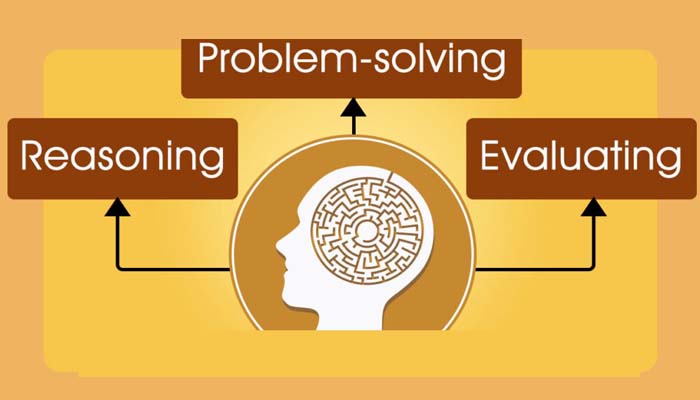Background of the Rohingya Crisis
The Rohingya are a Muslim minority group primarily residing in the Rakhine State of Myanmar. They have faced decades of systemic discrimination, statelessness, and violence from the Myanmar government and military. The Rohingya are not recognized as one of the official ethnic groups by Myanmar, and the 1982 Citizenship Law effectively rendered them stateless, stripping them of citizenship and associated rights. This persecution escalated into violence, most notably in 2012, 2015, and 2017, when coordinated military campaigns led to mass displacement and atrocities described by the United Nations as a “textbook example of ethnic cleansing.”
Humanitarian Impact on Bangladesh
- Mass Influx of Refugees: Since August 2017, over 700,000 Rohingya refugees have fled to Bangladesh, joining an already substantial number who had arrived during previous waves of violence. The total number of Rohingya refugees in Bangladesh is now over one million.
- Living Conditions: The majority of Rohingya refugees are housed in makeshift camps in Cox’s Bazar, the world’s largest refugee settlement. The living conditions are dire, with overcrowding, inadequate sanitation, and limited access to clean water and healthcare.
- Healthcare Strain: The sudden influx of refugees has overwhelmed local healthcare services. There has been a rise in communicable diseases, including cholera, measles, and diphtheria, necessitating large-scale vaccination campaigns and emergency medical interventions.
Economic Impact on Bangladesh
- Resource Strain: The large refugee population has put significant pressure on Bangladesh’s resources, including food, water, and energy. This has led to increased competition for resources between refugees and local communities.
- Environmental Degradation: The rapid deforestation to make way for refugee camps has led to soil erosion and other environmental issues, affecting local agriculture and wildlife.
- Financial Burden: The Bangladeshi government, with support from international organizations, has spent substantial amounts on providing aid and infrastructure for the refugees. However, the ongoing financial burden remains a significant challenge.
Social and Political Impact on Bangladesh
- Community Tensions: The presence of a large refugee population has led to tensions between the refugees and local communities. Issues such as job competition, cultural differences, and strain on public services have exacerbated these tensions.
- Security Concerns: There are concerns about the potential for radicalization and criminal activities within the refugee camps. The Bangladeshi government has increased security measures to address these issues.
- Diplomatic Challenges: Bangladesh has been actively seeking international support and diplomatic pressure on Myanmar to facilitate the safe and voluntary repatriation of Rohingya refugees. However, progress has been slow, and the situation remains unresolved.
International Response
- Humanitarian Aid: Numerous international organizations, including the United Nations and various NGOs, have provided significant humanitarian aid to support the Rohingya refugees and host communities in Bangladesh.
- Funding Gaps: Despite the aid, there are still significant funding gaps that hinder the ability to provide adequate services and support to the refugees.
- Advocacy and Pressure: The international community continues to advocate for the rights of the Rohingya people and pressure the Myanmar government to address the root causes of the crisis and create conditions for their safe return.
The Rohingya crisis remains one of the most pressing humanitarian issues in the region, with long-term implications for both the displaced population and the host country, Bangladesh. Addressing this crisis requires sustained international effort, resources, and a comprehensive approach to ensure the well-being and dignity of the Rohingya people.
Israel-Palestine War: A Historical and Ongoing Conflict
Introduction
The Israel-Palestine conflict is one of the most enduring and complex conflicts in modern history, characterized by a long history of territorial, political, and religious disputes. The conflict has witnessed numerous wars, violent escalations, and continuous tensions that have profoundly affected both Israelis and Palestinians, as well as the broader Middle Eastern region and the international community.
Historical Background
The roots of the Israel-Palestine conflict can be traced back to the late 19th and early 20th centuries, with the rise of Jewish nationalism, known as Zionism, and Arab nationalism. Jewish immigration to Palestine increased significantly under the British Mandate following World War I, leading to heightened tensions with the Arab population who saw the influx as a threat to their own national aspirations. The situation was further complicated by conflicting promises made by the British to both Jews and Arabs during and after World War I.
The United Nations’ 1947 Partition Plan, which proposed separate Jewish and Arab states with Jerusalem under international control, was accepted by the Jewish community but rejected by the Arab states and Palestinian Arabs. This rejection led to the first Arab-Israeli War in 1948, following the declaration of the State of Israel. The war ended with armistice agreements but resulted in the displacement of a large number of Palestinians, an event known as the Nakba (catastrophe), and the establishment of Israel with expanded territory beyond the UN plan.
Key Wars and Escalations
Since the establishment of Israel, the conflict has seen several major wars and periods of intense violence. The 1956 Suez Crisis, the 1967 Six-Day War, the 1973 Yom Kippur War, and the 1982 Lebanon War are notable examples. Each of these conflicts resulted in significant changes in territorial control and had lasting impacts on the political dynamics of the region.
One of the most significant conflicts was the 1967 Six-Day War, in which Israel captured the West Bank, Gaza Strip, Sinai Peninsula, and Golan Heights. The occupation of these territories has remained a central issue in the conflict, leading to ongoing disputes over land and sovereignty.
The Intifadas
The Palestinian uprisings, known as the Intifadas, have been critical in shaping the conflict. The First Intifada (1987-1993) was marked by widespread civil disobedience, protests, and violence in the occupied territories, drawing international attention to the Palestinian cause. The Second Intifada (2000-2005) was more violent, with suicide bombings, Israeli military operations, and significant casualties on both sides.
Recent Conflicts and Current Situation
The most recent major escalation occurred in May 2021, known as the Gaza Conflict or the 2021 Israel-Palestine war. This conflict was triggered by rising tensions in East Jerusalem, particularly around the Al-Aqsa Mosque during Ramadan, and the threatened evictions of Palestinian families in Sheikh Jarrah. In response to these events, Hamas, the militant group controlling Gaza, launched rocket attacks on Israel, prompting extensive Israeli airstrikes on Gaza.
The 11-day conflict resulted in over 250 Palestinian and 13 Israeli deaths, along with significant destruction of homes and infrastructure in Gaza. A ceasefire brokered by Egypt and other international actors brought an end to the immediate hostilities, but the underlying issues remain unresolved.
Humanitarian Impact
The humanitarian impact of the Israel-Palestine conflict has been profound. In Gaza, the repeated cycles of violence, blockade, and economic restrictions have led to dire living conditions, high unemployment, and limited access to basic services. In the West Bank, Israeli settlements, military checkpoints, and restrictions on movement have severely affected Palestinian daily life and economic prospects.
International Response
The international community has played a significant role in addressing the conflict, with various efforts to mediate peace and provide humanitarian aid. Diplomatic initiatives, such as the Oslo Accords, Camp David Summit, and the Roadmap for Peace, have aimed to achieve a two-state solution, envisioning Israel and Palestine living side by side in peace. However, these efforts have often been stymied by political, security, and ideological challenges.
Humanitarian organizations, including the United Nations Relief and Works Agency for Palestine Refugees in the Near East (UNRWA), continue to provide essential services to Palestinian refugees and those affected by the conflict. However, funding shortfalls and political obstacles often hinder their effectiveness.
Conclusion
The Israel-Palestine conflict remains one of the most challenging and contentious issues in international politics. The recent escalation in 2021 highlighted the fragility of the situation and the urgent need for a comprehensive and lasting resolution. Addressing the core issues of territory, refugees, settlements, and security is essential for achieving peace and stability in the region. Sustained international engagement, mutual recognition, and a genuine commitment to dialogue and negotiation are crucial for ending the cycle of violence and building a future where both Israelis and Palestinians can coexist peacefully.



